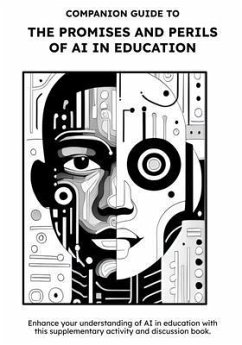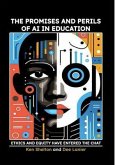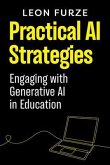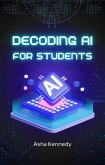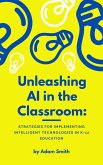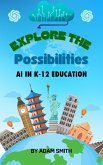Transform theory into practice with this essential companion guide to The Promises and Perils of AI in Education by Ken Shelton and Dee Lanier. This actionable resource guides educators, administrators, and policymakers through the complexities of implementing AI in educational settings, with a steadfast focus on equity and ethics.
The guide's systematic approach breaks down each chapter into three key components:
What distinguishes this guide is its commitment to collaborative learning and contextual understanding. Rather than offering quick fixes, it provides structured opportunities to engage with complex issues through proven thinking routines like "See, Think, Wonder" and "Connect, Extend, Challenge." The guide emphasizes that "More Context = Better Output," helping readers develop the digital literacy and AI fluency needed for thoughtful implementation.
Perfect for group discussion, this companion guide bridges the gap between understanding AI's potential and implementing it responsibly in educational settings. Through carefully crafted scenarios and discussion prompts, readers learn to evaluate AI tools critically while maintaining a focus on equitable student outcomes.
Whether you're new to AI in education or looking to deepen your understanding, this guide provides the framework needed to move from theory to practice, ensuring AI serves its highest purpose: enhancing learning opportunities for all students while upholding ethical principles and equity.
The guide's systematic approach breaks down each chapter into three key components:
- Concepts: Explore fundamental ideas through guided questions that spark meaningful discussion.
- Problems Identified: Examine real challenges of AI implementation, moving beyond surface-level solutions to address critical equity concerns.
- Tasks: Apply learning through practical activities and strategic prompting protocols.
What distinguishes this guide is its commitment to collaborative learning and contextual understanding. Rather than offering quick fixes, it provides structured opportunities to engage with complex issues through proven thinking routines like "See, Think, Wonder" and "Connect, Extend, Challenge." The guide emphasizes that "More Context = Better Output," helping readers develop the digital literacy and AI fluency needed for thoughtful implementation.
Perfect for group discussion, this companion guide bridges the gap between understanding AI's potential and implementing it responsibly in educational settings. Through carefully crafted scenarios and discussion prompts, readers learn to evaluate AI tools critically while maintaining a focus on equitable student outcomes.
Whether you're new to AI in education or looking to deepen your understanding, this guide provides the framework needed to move from theory to practice, ensuring AI serves its highest purpose: enhancing learning opportunities for all students while upholding ethical principles and equity.
Dieser Download kann aus rechtlichen Gründen nur mit Rechnungsadresse in A, D ausgeliefert werden.

